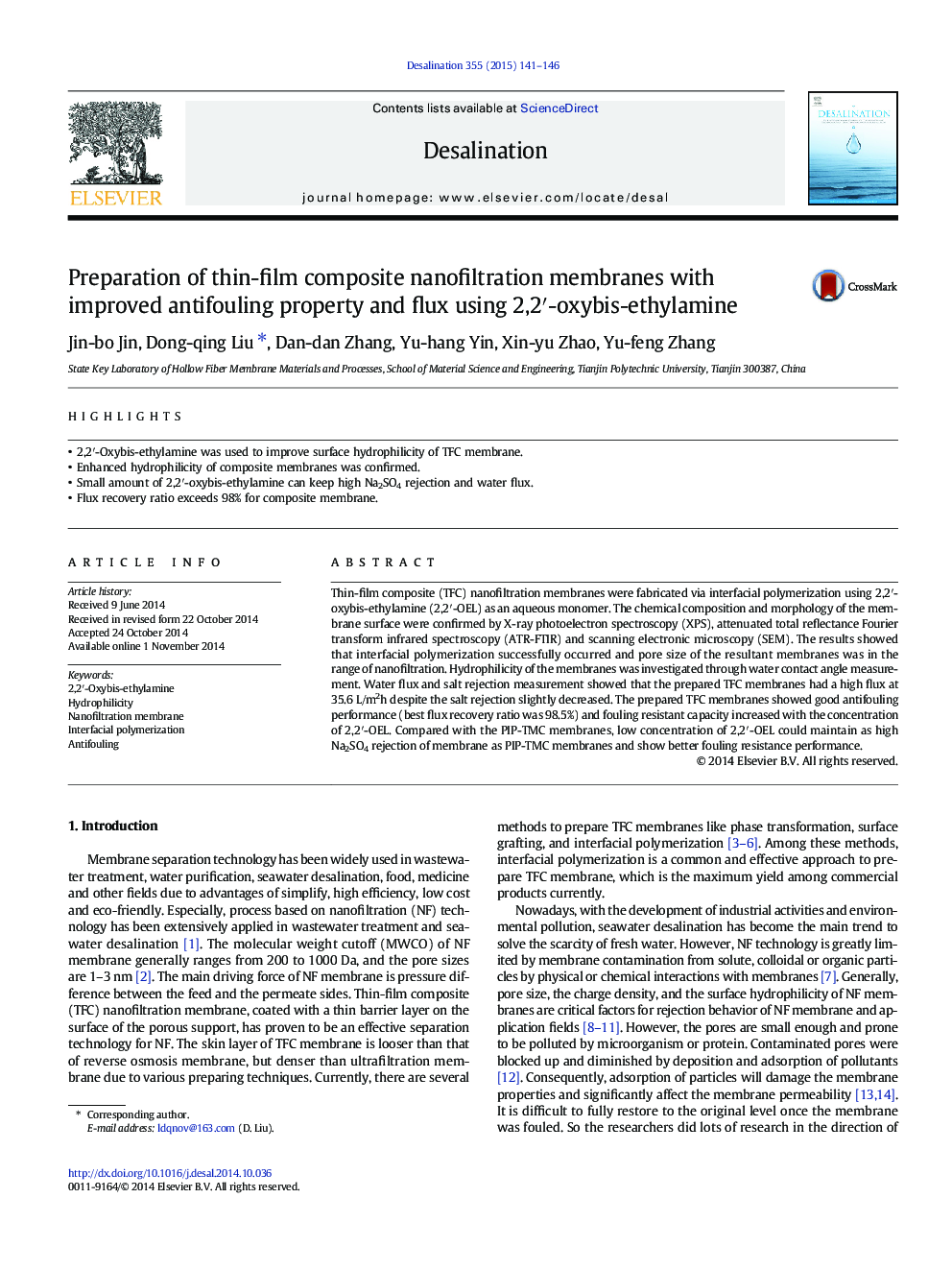| Article ID | Journal | Published Year | Pages | File Type |
|---|---|---|---|---|
| 623217 | Desalination | 2015 | 6 Pages |
•2,2′-Oxybis-ethylamine was used to improve surface hydrophilicity of TFC membrane.•Enhanced hydrophilicity of composite membranes was confirmed.•Small amount of 2,2′-oxybis-ethylamine can keep high Na2SO4 rejection and water flux.•Flux recovery ratio exceeds 98% for composite membrane.
Thin-film composite (TFC) nanofiltration membranes were fabricated via interfacial polymerization using 2,2′-oxybis-ethylamine (2,2′-OEL) as an aqueous monomer. The chemical composition and morphology of the membrane surface were confirmed by X-ray photoelectron spectroscopy (XPS), attenuated total reflectance Fourier transform infrared spectroscopy (ATR-FTIR) and scanning electronic microscopy (SEM). The results showed that interfacial polymerization successfully occurred and pore size of the resultant membranes was in the range of nanofiltration. Hydrophilicity of the membranes was investigated through water contact angle measurement. Water flux and salt rejection measurement showed that the prepared TFC membranes had a high flux at 35.6 L/m2h despite the salt rejection slightly decreased. The prepared TFC membranes showed good antifouling performance (best flux recovery ratio was 98.5%) and fouling resistant capacity increased with the concentration of 2,2′-OEL. Compared with the PIP-TMC membranes, low concentration of 2,2′-OEL could maintain as high Na2SO4 rejection of membrane as PIP-TMC membranes and show better fouling resistance performance.
